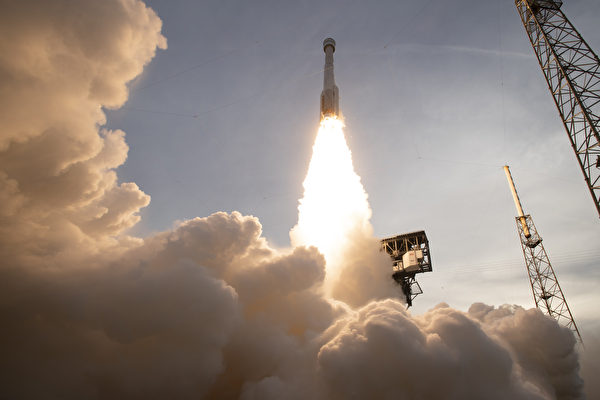The American aerospace giant Boeing’s newly developed spacecraft CST-200 “Starliner” was scheduled to conduct its first manned test flight on Monday evening, May 6, Eastern Time. However, due to technical issues with the rocket, the launch was postponed just two hours before liftoff. The United States National Aeronautics and Space Administration (NASA) announced that the spacecraft will not launch before Friday.
The CST-200 “Starliner” carrying astronauts to the International Space Station (ISS) has been highly anticipated. The launch is a joint project between Boeing and NASA. After nearly 10 years of development and multiple delays, the launch was originally set for Monday night at 10:34 Eastern Time.
The spacecraft is being carried by an Atlas V rocket provided by the joint venture United Launch Alliance (ULA), a partnership between Boeing and the American defense giant Lockheed Martin. The spacecraft is currently at NASA’s Kennedy Space Center in southern Florida preparing for launch.
However, a valve issue occurred in the rocket’s second stage. Although the problem was fixed, the launch was temporarily canceled when there were less than two hours left in the countdown.
The “Starliner” mission was intended to transport NASA veteran astronauts Barry Wilmore (61, a retired U.S. Navy captain) and Sunita Williams (58, former Navy pilot) to the International Space Station.
Before the launch was called off, the two astronauts had been seated for about an hour. They later exited the spacecraft with the help of technicians and left the launch site, waiting for a second launch attempt after the issue was resolved.
After overnight tests and inspections by the ULA team, it was decided to reschedule the launch for Friday.
The spacecraft was supposed to reach the space station approximately 26 hours after liftoff and dock with the orbiting research outpost about 250 miles (400 kilometers) above Earth. Wilmore and Williams are expected to stay at the space station for about a week before returning to Earth aboard the “Starliner,” landing in the southwestern U.S. desert with the assistance of parachutes and safety airbags.
This long-awaited launch marks Boeing’s establishment of a partnership with NASA and becoming the second company, after SpaceX, to send astronauts into space.
In 2014, NASA’s Commercial Crew Program selected Boeing and Elon Musk’s SpaceX to transport astronauts to the International Space Station. The competition between the two companies has helped lower development costs. Boeing’s contract was worth $4.2 billion at the time, while SpaceX’s was $2.6 billion.
However, in the competition with SpaceX for NASA’s share of the space market, Boeing has clearly been at a disadvantage.
Since its first test flight in 2020, SpaceX’s Dragon spacecraft has launched 12 manned missions to the International Space Station. In contrast, Boeing’s CST-100 “Starliner” suffered a failed unmanned flight to the ISS in 2019. The second unmanned launch in 2022 successfully docked with the ISS. However, the first manned flight has been repeatedly delayed due to malfunctions.

